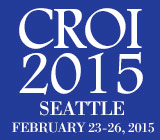 A so-called TLR7 agonist has shown promise in early research into its ability to wake infected cells from a dormant, or latent, state and cause them to produce HIV, Project Inform reports. The ultimate hope is that the immune system can then kill those cells and reduce the size of the viral reservoir, possibly contributing to a cure.
A so-called TLR7 agonist has shown promise in early research into its ability to wake infected cells from a dormant, or latent, state and cause them to produce HIV, Project Inform reports. The ultimate hope is that the immune system can then kill those cells and reduce the size of the viral reservoir, possibly contributing to a cure.
Researchers conducted two studies of Gilead Sciences’ TLR7 agonist, GS-9620, which is already in Phase II research as a treatment for hepatitis B virus (HBV): one study among the blood cells of four HIV-positive individuals treated with antiretrovirals, and another study among rhesus macaque monkeys. They presented their findings at the 2015 Conference on Retroviruses and Opportunistic Infections (CROI) in Seattle.
Investigators in the human-cell study took the blood cells and incubated them for four days either with GS-9620 or a substance that served as a control. The levels of viral RNA rose in the samples treated with GS-9620, indicating that certain cells had been taken out of a latent state and begun producing virus again.
The other study included 10 monkeys who were infected with SIV, HIV’s simian cousin, and which were treated for the virus so that they had an undetectable viral load. Four monkeys received GS-9620 and six a placebo. GS-9620 was given every two weeks, at escalating doses through the third dose, followed by four more administrations at the same level as the third dose. When compared with the placebo group, the treated monkeys experienced transient and consistent increases in viral load—in the 500 to 1,000 range—coinciding with the fourth through seventh doses. Researchers also found evidence that the drug had reduced the size of the viral reservoir.
A Phase I safety study of GS-9620 has begun among humans.
To read the conference abstract on the primate study, click here.
To read the Project Inform report, visit https://www.poz.com/article/project-inform-leader-hiv-hepatitis-c-advocacy-likely-close

Thinkstock






Comments
Comments